What is Medicare Prescription Drug coverage (Medicare Part D)?
Medicare prescription drug coverage (Part D) is insurance provided by private companies that provide prescription drug coverage for people on Medicare. Part D became effective in 2006 and is administered through private plans that are approved by the U.S. Federal Government through CMS.
Medicare prescription drug coverage (Part D) is available for purchase to everyone entitled to Medicare Part A and/or enrolled in Part B. The Medicare drug benefit should help reduce prescription drug costs and help protect against higher (catastrophic) costs in the future. Once you have Medicare prescription drug coverage, you will pay some of the costs and Medicare will pay some of the costs. Your costs will vary depending on the plan you choose.
How Much Does Medicare Drug Coverage Cost?
Your costs will vary depending on the drugs you use, the plan you choose, and whether you qualify for extra help paying your Medicare Part D costs. Exact coverage and costs are different for each plan, but all Medicare drug plans must provide at least a standard level of coverage set by Medicare. Call the plan you’re interested in to find out more about plan costs.
How Do Medicare Drug Plans Work?
After you join a Medicare drug plan, the plan provider will mail you membership materials, including a card to use when you get your prescriptions filled. When you use the card, you may have to pay a copayment, coinsurance, and/or deductible if any are charged by the plan.
Who is eligible for Medicare Part D?
Anyone who lives in the geographic service area and is entitled to Medicare Part A and/or enrolled in Medicare Part B is entitled to Medicare prescription drug coverage, regardless of income. No physical exams are required. Nobody can be denied for health reasons
What if I already have prescription drug coverage?
You can only be enrolled in one Medicare Part D plan each year. You should talk to your plan, benefits administrator or insurer before making any changes. You will be notified about any changes in your current coverage so you can decide if you should join a Medicare Part D plan or switch from your current Part D plan.
How do I get part D coverage?
You’ll need to enroll in a Medicare Part D plan offered in your area. There are two types of prescription drug plans available:
• “Stand alone” Part D plans that cover only Part D prescription drugs
• Medicare Advantage Prescription Drug Plans (MAPD) plans, which cover medical and prescription drug costs.
Are all drug plans the same?
No. There could be differences in monthly premium, deductible, covered drugs, copay or coinsurance levels and the pharmacies that you can use. Some plans offer supplemental benefits, such as additional prescription drug coverage in the coverage gap. To determine which plan is best for you, compare plans in your area to learn what your benefits and estimated costs will be.
When Can You Join, Switch, or Drop a Medicare Drug Plan?
You can join, switch, or drop a Medicare Part D Drug Plan at these times:
• When you first become eligible for Medicare (3 months before you turn age 65 to 3 months after the month you turn age 65)
• From October 15-December 7. Your coverage will begin on January 1 of the following year.
• At any time if you qualify for extra help. This includes people who have Medicare and Medical, belong to a Medicare Savings Program, get Supplemental Security Income (SSI) benefits (but not Medicaid), and those who apply and qualify. In certain situations, you may be able to join, switch, or drop Medicare drug plans at other times (like if you move out of the service area or live in an institution).
• Each year, you have a chance to make changes to your Medicare Advantage or Medicare prescription drug coverage for the following year. There are 2 separate enrollment periods each year. During the open enrollment period (October 15-December 7, 2018) for Medicare Advantage and Medicare PDP, you can make multiple types of changes to your plan, including signing up for the first time, dropping coverage, or switching between plans. If you want to disenroll from your Medicare Advantage plan and switch to Original Medicare, the time frame for that is January 1-February 14, 2018. If you switch to original Medicare, you’ll have until February 14, 2018 to add a Medicare PDP. During this time frame you cannot Switch from Original Medicare to a Medicare Advantage Plan, switch from one Medicare Advantage Plan to another, switch from one Medicare Prescription Drug Plan to another, join, switch, or drop a Medicare Medical Savings Account (MSA) Plan.
How Do You Switch Your Medicare Drug Plan?
You may change your Medicare Depending on your circumstances, you can switch to a new Medicare drug plan by simply joining another drug plan during one of the times listed above. You don’t need to tell your old Medicare drug plan you are leaving or send them anything. You will be disenrolled automatically from your old Medicare drug plan when coverage in your new drug plan begins. You should get a letter and enrollment information from your new plan provider in the mail. Don’t give personal information to plans that call you unless you’re already a member of the plan.
What Is the Medicare Part D Late-Enrollment Penalty?
If you don’t join a Medicare drug plan when you are first eligible for Medicare Part A and/or B and you go without creditable prescription drug coverage for 63 continuous days or more, you may have to pay a late-enrollment penalty to join a plan later. This penalty amount changes every year, and you will have to pay it as long as you have Medicare prescription drug coverage.
